Feeling stuck writing your IEPs? Download the 10 IEP Writing Commandments for FREE here!


Sentence Building Activities for Special Ed
Do you have students in your special education classroom who struggle with writing sentences? Or maybe they struggle with putting words together to form a sentence?

Today I would like to introduce you to Sentence Building .
This resource was created out of a desperate need for my own self-contained classroom. Students in my classroom, verbal and nonverbal, were struggling with sentences… writing them, putting them together… the whole nine yards… but they had IEP goals to meet and I had zero curriculum to help them achieve their annual goals.
So I created it for them, providing models and guidance to promote independence with the task…
…and it worked!

Sometimes it is difficult for some of our students to figure out how to organize words in a sentence. There are so many different reasons your students may be struggling, including ( but not limited to ):
- spelling, handwriting, lack of success previously, can verbalize sentences, but not put the ideas on paper…
I understand both you and your student’s frustrations. Writing sentences is tough! There’s so much that goes into it, but it is a life-long skill our students need to learn and master.
You can use this full-year resource to teach students how to write a sentence, or to reinforce the skills through interactive sentence building practice. These leveled activities can be used in small or whole group, in literacy centers, as morning or word work, in sensory bins or in intervention groups.

Daily sentence writing allows students to:
- practice spelling and identify spelling patterns
- use their thinking skills to create a complete sentence, and
- improve comprehension and writing skills.
With differentiated practice, students will feel confident to:
- write a sentence
- read and spell common words and sight words
- answer comprehension questions about the text
- visual how sentences come together by putting words in order
- use pictures to guide their writing, and
- demonstrate growth
Other skills practiced when using Sentence Builders: capitalization and punctuation, letter formation, spacing between words, parts of speech, cutting and gluing practice, and more!

• 40 weeks of writing and sentence building instruction • 5 levels of differentiation, print and implement ready!
How is this resource differentiated to meet the needs of all of my learners? There are 3 different levels of sentences: Level 1 – 6 sentences with 3 or 4 words per sentence. Level 2 – 6 sentences with 6 words per sentence. Level 3 – 6 sentences with 8 to 12 words per sentence.
{ Grab the Sentence Builder Bundle here . }
So let’s take a look at how it works, the different levels, and the recommendations for use in the classroom.

There are 6 sentences within each level. This is Level 1, so each sentence has 3 or 4 words.
I recommend printing these cards on cardstock and laminating so you can reuse them each year.

Have students work on one sentence at a time. Using the picture cards, have students put the words in order to form the sentence correctly.

Next is getting the cut and paste worksheet ready.
For some students, I will have them cut their own sentence strips apart. For others ( or if we are short on time ), I will cut them out ( typically while they are putting the sentence together ).
Now it’s time to paste!

With this worksheet, there are 4 options available. As shown ( errorless, with pictures ), errorless with words, and just pictures or just words. Having these different levels of differentiation will help you meet the needs of all learners in your classroom, while working on the same thing.
Paste the sentence strip onto the worksheet. We love using our glue sponges !
This first step, putting the sentences together and cutting/pasting activity, is typically done on the first and second day of writing instruction.

As we move into day two, start by having students put the sentences in order again. You can mix all of the picture cards up, have students sort the cards, and then put the sentences in correct order.
Then you will move into the third day of writing instruction with either the trace or write Sentence Builder ( depending upon student skill level ).
Students will use the picture cards as a model to write the sentence in correct order, as well as spell all of the words correctly.

Typically if students finish early, we have this “extra” Sentence Builder activity to complete… and sometimes we will complete this on a Thursday if we’ve completed the rest of our writing work.
This challenge activity provides two options for students. One, use the words given with each picture to write 2 new sentences about that picture with the words. Two, the extra challenge at the bottom asks students to write their own sentence about each image.
This really gets students thinking outside of the box and gives them an opportunity to showcase lesson mastery and creativity.

Level 2 – each sentence has 6 words per sentence. All of the activities are identical to Level 1.
You can easily have students working on the same week’s topic ( this post shows the weather set ), but on different levels. All of the images are the same within each level, but the sentence difficulty increases.

Level 3 – each sentence has 8 to 12 words per sentence. All activities are, again, identical to Level 1.

What are other teachers, like you, saying about Sentence Builders?
“ The sentences are formulated in such a way that they work on sentence structure as well as grammar and can also be used as comprehension activities if you come up with questions for them. ” – Samantha W.
“ I am so excited for this resource!!! Differentiating writing in my class is challenging as they just want to copy each other. Now they have their own personalized stuff. ” – Macy B.
“ LOVE LOVE LOVE! This is differentiated to my lower level writers but also to my writers who need challenged. It is a great resource and I use it in independent writing centers. ” – Passion2Teach
“ What a wonderful, comprehensive resource for writing! I love the differentiated levels- all of my students will be able to participate! ” – Annie A.
If you’d like to try a set out for free, you can download a free set of Level 2 in the Resource Library .
{ Grab the Holiday Sentence Builder Bundle here . }

YOU MAY ALSO LIKE:
- Getting Students Excited to Write in Any Classroom
- Accommodating Guided Reading Levels: Part 2

- Search Search
Success! Now check your email to confirm your subscription.
There was an error submitting your subscription. Please try again.
- Mrs D’s Corner Shop
- Teachers Pay Teachers
Get the Inside Scoop!
Miss Ashlee's Class
Differentiated and Visual Supported Resources for Special Education
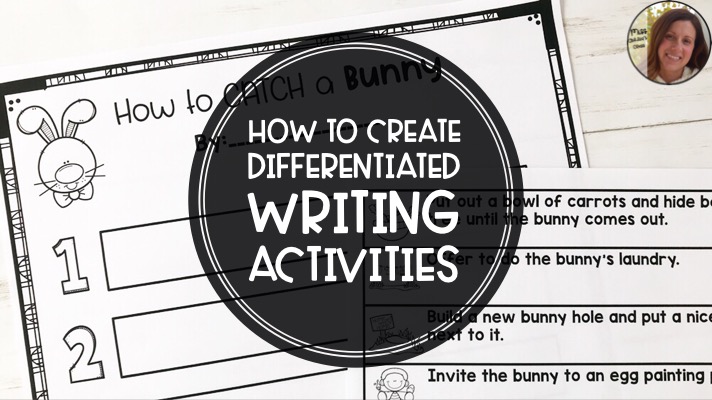
How to Create Differentiated Writing Activities for Special Ed Classrooms
Teaching writing lessons as a whole group to students of multiple ability levels can be difficult. You want to teach writing activities that are engaging, challenging, and differentiated so all your students can participate, but your students are all so different! Writing ability levels can cross a large range in any classroom depending on your grade and your type of classroom. You may have students who are able to write in complete sentences and students who have limited fine motor skills in the same class. You may have students generating their own ideas and other students who require error-free picture choices to participate. This definitely creates a challenge!
Because I love creative writing, I wanted to find a way for all my students to participate in the same writing activity, but yet still be challenged to the best of their ability. Resources like this are hard to find, so I started creating my own. Over the years, I got better at learning my student’s abilities and how to challenge them. Now, my students enjoy my creative writing lessons and they even think writing is FUN!
Here are the steps I follow to create a differentiated writing lesson in my classroom:
Step 1: Pick a Topic
Before you create any writing activity you have to have a topic! This, of course, is the easiest step. I tend to lean towards silly topics like “How to Catch a Bunny”, or simple prompts such as “My favorite thing about ice cream is…” 🙂 But the bottom line is, whatever your focus for the lesson may be, you need a topic!
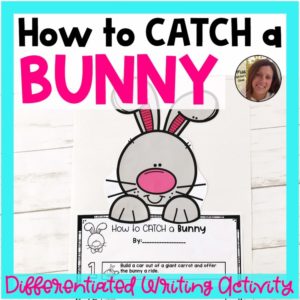
Step 2: Group Students by level of support
Start by making a list of your students and their ability levels. Write down the supports each student may need to answer a writing prompt. I typically start with students who need the least amount of support and work my way up to the students who need maximum support. If you are a visual person, it can be helpful to create a spreadsheet of your students. Then list different supports you use in your classroom. However you create your list, you want to make sure you are separating your students into groups.
Now, keep in mind, when I say “break up your students into groups” I ONLY mean on paper. After I have created all my different versions and I am ready to go, I teach the lesson as a whole group lesson. We discuss the topic together, brainstorm together, and go over instructions together. The differentiation comes in when I pass out the writing prompt papers. We are still all working together and discussing the topic as a group, but students are working on the version that is appropriate for the level of support they need to be successful.
Okay, now back to grouping… I break up my student list into 3 Groups :
Group 1 – Developed Writers
These are the students who need minimal support. Students in this group are able to write using complete sentences, with minimal errors. They are able to use correct capitalization and punctuation, or they are able to use a writing checklist to correct errors. These students are working on writing a simple paragraph (2-3 sentences) on topic to answer a writing prompt. Students in this group are using a spelling dictionary and writing checklist independently.
Group 2 – Emerging Writers
These students need a moderate level of support. Students in this group need sentence starters or complete the sentence style writing. They need numbered lines when writing a sequence of events. Some students are able to generate their own ideas to answer a writing prompt, but may have difficulty writing complete sentences with proper sentence structure, correct capitalization, punctuation, and spelling. Students in this group should be able to develop an idea using a word bank or idea bank related to the topic.
Group 3 – Non-Writers
These students need maximum level of support. Students in this group have limited fine motor skills making it difficult to use correct letter formation and spacing. This group is appropriate for students who are non-verbal and use AAC devices or picture support for communication. Students in this group have may difficulty generating independent thoughts to answer questions and require error-free, picture-supported choices to participate.
Step 3: Create Version 1 for your Developed Writers
Once you create the first version of your writing prompt, you can duplicate it, and add appropriate supports with each additional version you create. This version is the highest level of differentiation for your class. Students who use this version may just need a blank sheet of writing paper and the writing prompt. Maybe you add a small picture at the top for some picture support.
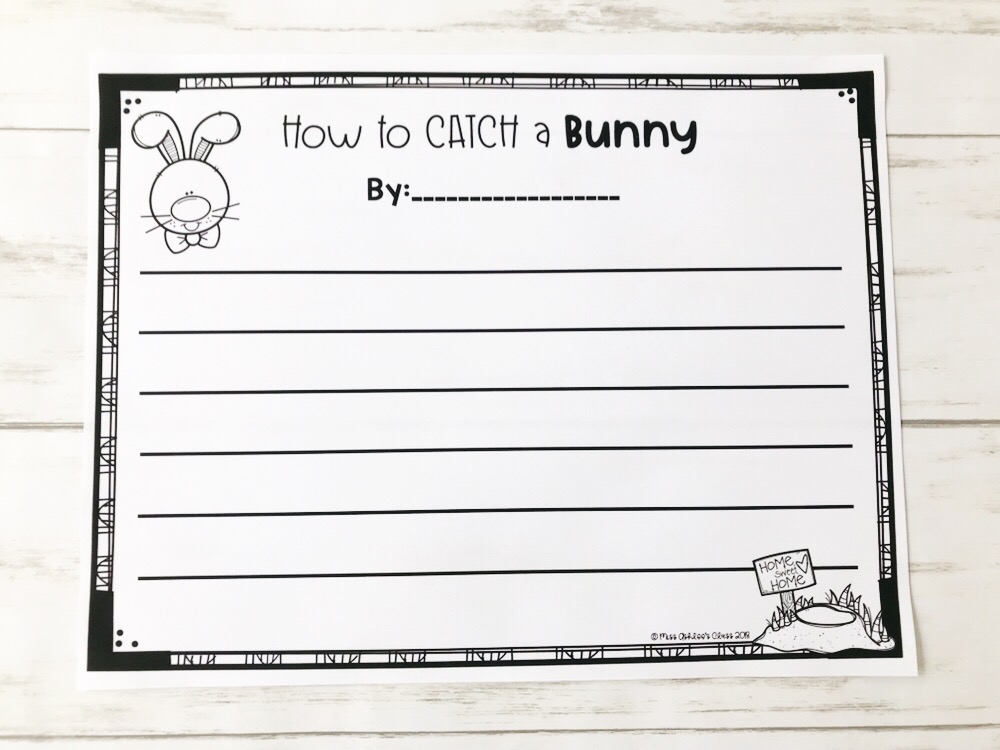
Step 4: Duplicate and Create Additional Versions
Version 2 is for your emerging writers.
Give the same writing prompt or question and add support. You can add a small word bank for students to use for ideas or correct spelling. This is the version where you might provide a sentence starter or fill-in the blank style prompts, such as “My favorite recess activity is … I like this activity because…” This version gives students a way to complete the same prompt as their peers, but with support.
In some classrooms you may have students who are able to verbally provide an answer to the writing prompt (either by speaking or using an AAC device), but unable to write the answer due to limited fine motor skills. If they can verbally give you the answer, then you can write the answer with a highlighter and have them trace it the best they can. Even if their tracing is not legible, it provides these students the opportunity to participate and practice their fine motor skills. You could also give them the option to type the answer on the computer or any other device they are comfortable with.
Writing checklists, spelling dictionaries, and picture-supported word banks are all great examples of support for this version. CLICK HERE for a Free Writing Checklist Bookmark I use in my classroom.
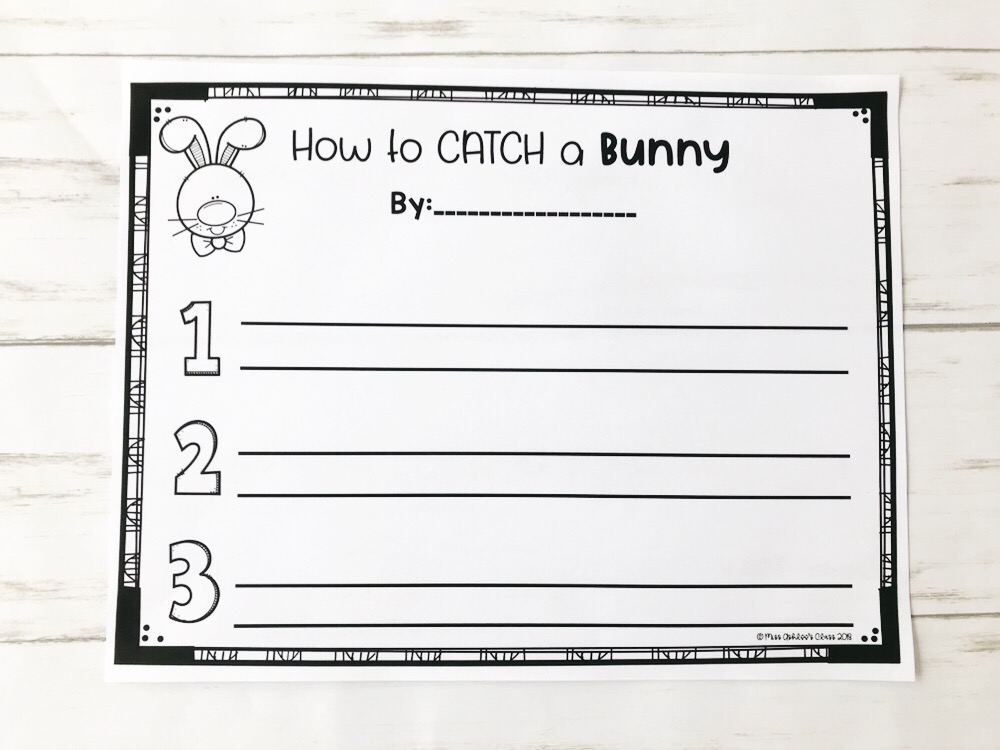
Version 3 is for your Non-Writers
This version is for students who need a maximum level of support to complete writing activities. With this version, you provide error-free, picture-supported answer choices, and fill-in the blank questions. If you do not have access to a picture symbol program you can easily insert images onto a worksheet using Google Slides (Click Here for a quick video tutorial) . Providing picture choices in cut/paste format also gives these students the opportunity to strengthen fine-motor skills.
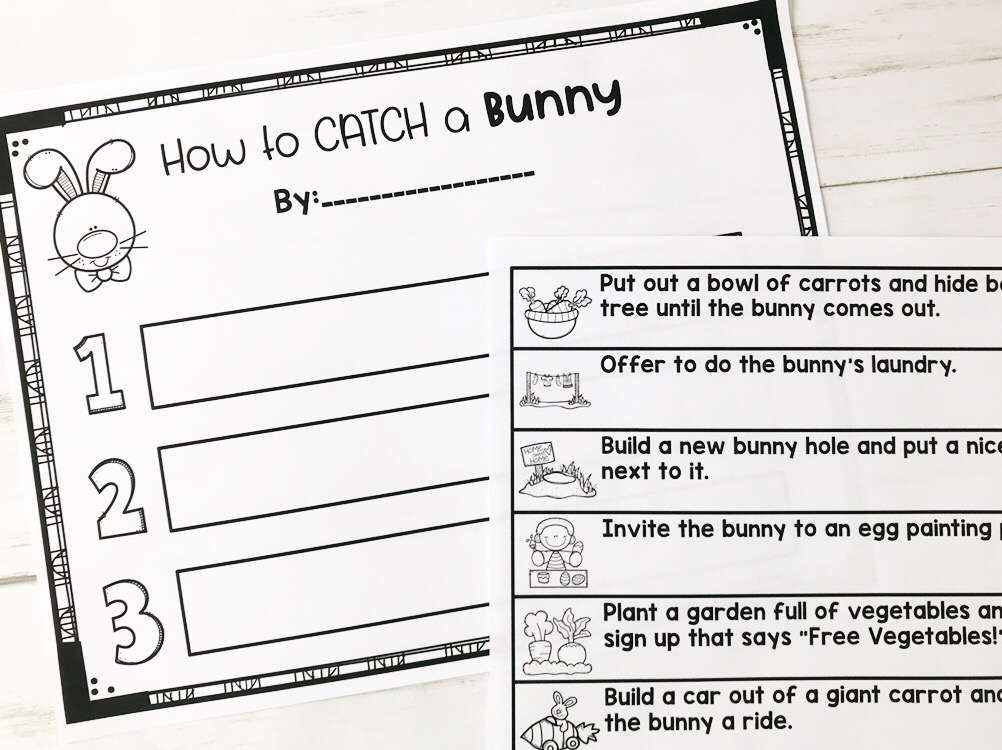
How many versions of each writing activity you create is solely based the the needs and abilities of your students. Sometimes you may need more, sometimes less, but the goal of this grouping system is to create a differentiated writing lesson you can do as a whole group. I hope this helps you organize and create some awesome, writing lessons for your students! Thank you for reading!
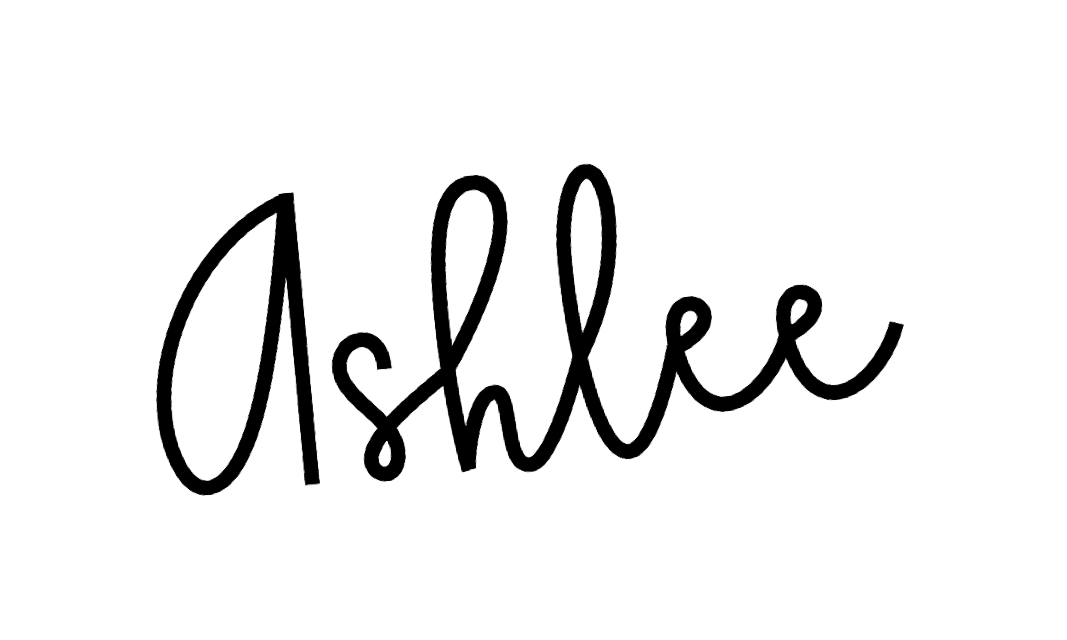
If you are interested in checking out some of my differentiated writing lessons:
CLICK HERE to gain access to my Free Resource Library and download this Recess! FREEBIE!
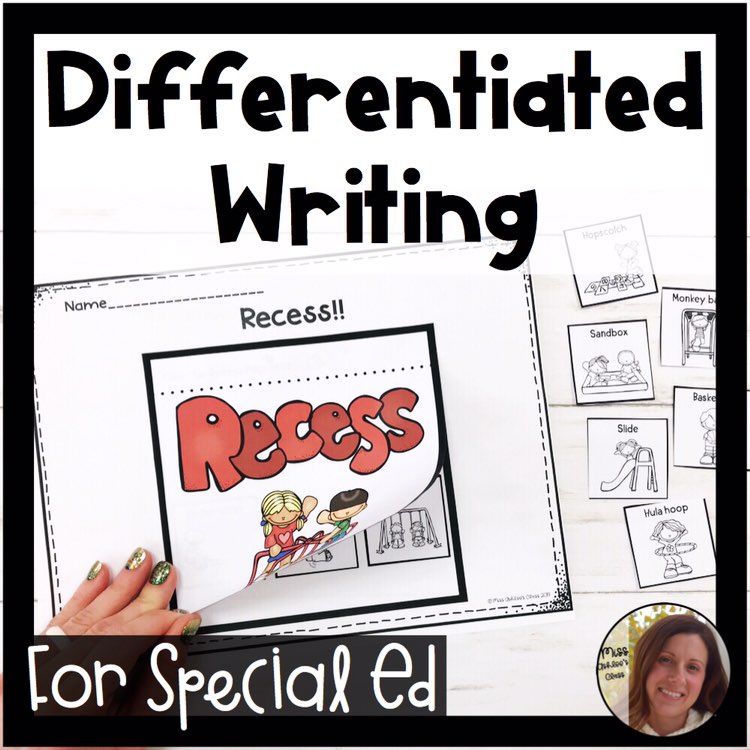
Or check out more resources in my TPT Shop!
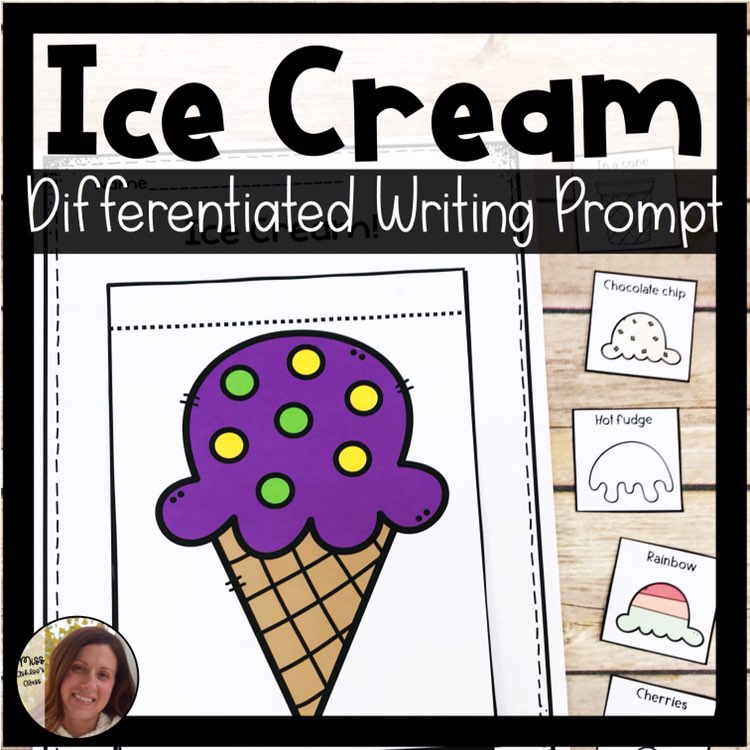
Leave a Reply Cancel reply
Your email address will not be published. Required fields are marked *

1 (844) 773-3822
Creative Writing Activities for a Special Needs Student
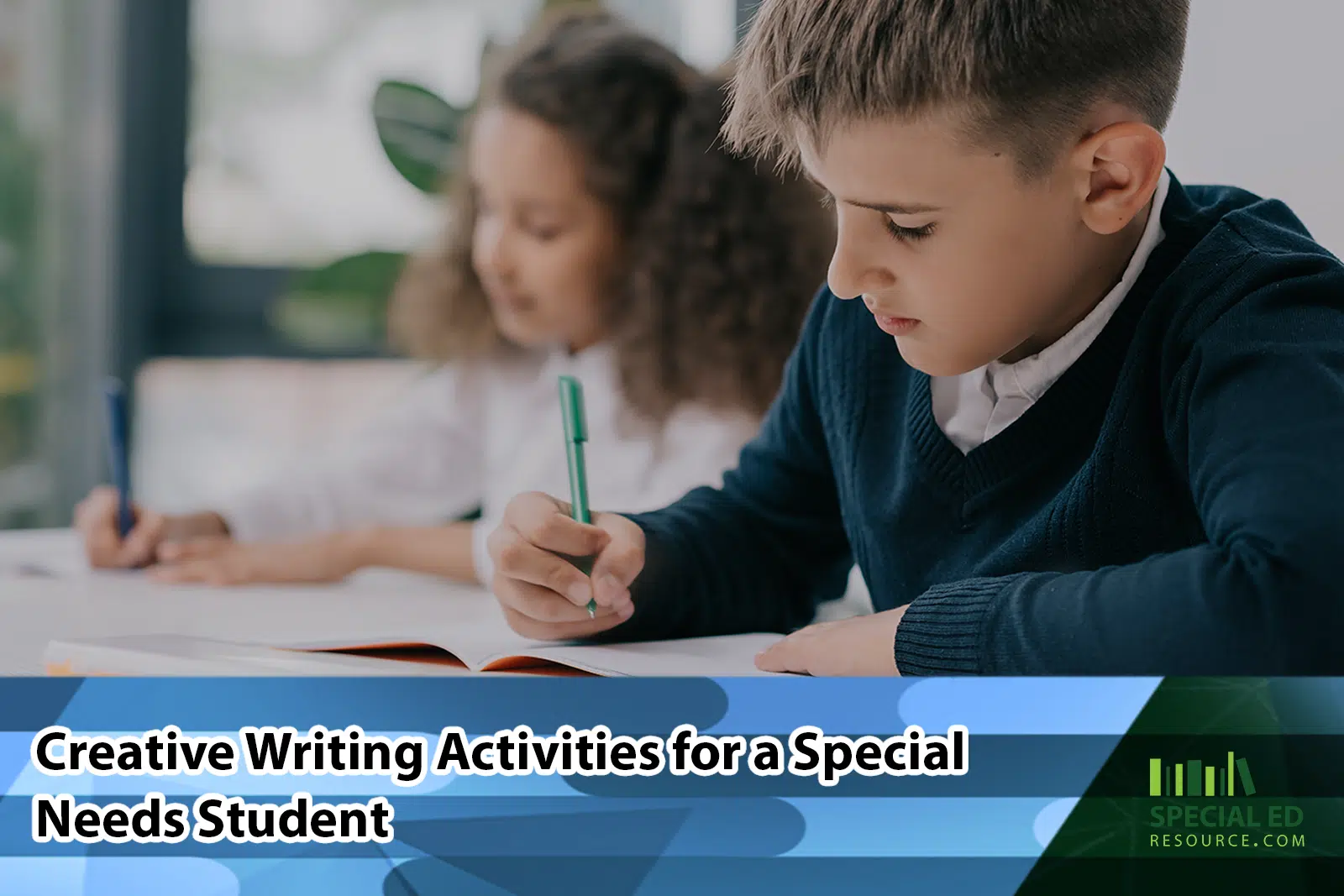
I always assigned creative writing activities on the first day of school to start the year off on the right foot. For instance, I wanted the students to share something from their Summer vacation right after lunch this particular school year.
However, one of my students had a hard time with the assignment.
“I can’t do this!” John said, slamming his pencil down. “These writing assignments are just too hard for me,” he continued.
“What is it about the assignment that makes it too hard for you, John,” I said.
“I’m just not good at writing, and I don’t know what to write about,” John said.
Writing is one of the hardest tasks for children who have special needs. The process of getting their thoughts and ideas down on paper is overwhelming for students.
Creative Writing Activities for a Special Needs Student
Although writing can be a tedious process, there are many different ways for students to express themselves through writing. Here are eleven great writing activities to try with your students.
Want One-On-One Expert Help?!
Check this out.
11 Writing Activities Your Special Needs Students Will Enjoy
#1 comic book writing.
I have found that some of my students love writing comic book stories. They don’t feel overwhelmed like they do when they are assigned a five-paragraph essay. In addition, it is a creative way to practice writing in smaller sentences.
You can find comic book-creating websites or templates online to help you plan the assignment. I have found that Make Beliefs Comix is a great online resource for those wanting to explore and write creatively. I have a student who uses this website, and he loves being able to create his own comic book.
#2 Sensory Writing
Sensory writing is an engaging way to encourage students to use all of their senses in their writing.
Begin by offering your students a variety of sensory experiences, such as:
- Smelling different scents
- Touching various textures
- Listening to different sounds
- Looking at things in different ways, like under a microscope, magnifying glass, or in the dark with a flashlight
Then, have them describe these experiences using vivid language and detail. Sensory writing activities help students to develop their descriptive writing skills and connect their experiences to their writing.
#3 Memory Writing
Memory writing is an activity where students can reflect on something they read earlier in the week. The reading could be something that they read or experienced in reading groups.
The students have a time limit to reflect and write so that everyone has an opportunity to write about what they remember. This creative writing activity is important because it encourages students to recall their memories, which builds stronger connections in the brain.
#4 Reading Response Journals
As a student, I hated work that seemed like a waste of time. One thing that I remember was that each week we had to write a reading response about something that we had read that week.
A reading response journal is a series of entries from students’ reflections, opinions, and reactions to readings. This active learning technique encourages them to examine things thoroughly and relate what they’ve read to their prior knowledge and experiences.
Tips for Reading Response Journals
- Let your student know this is his journal. No one else has to read it, and he will not be graded on what he writes in it.
- Give ample time for each student to write in their journal immediately after reading time when it is fresh on their mind.
- Provide journal prompts so your students aren’t sitting there staring at the blank page, overwhelmed with what to write. Here are a couple of reading response journal prompts:
- Reader Response Journal Prompts
- Reader Response Journal Questions
#5 Picture Storytelling
Visual aids can be a powerful tool to engage special needs students in creative writing. Provide your students with a selection of interesting images, such as landscapes, animals, or scenes from everyday life.
Encourage them to choose one image and write a short story based on what they see. This activity allows students to practice their descriptive writing skills while simultaneously stimulating their imagination.
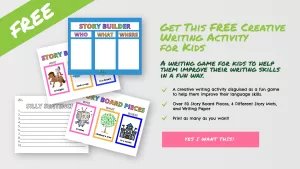
#6 Group Storytelling
Group storytelling is a collaborative and interactive way to help your students practice their writing skills.
First, divide your students into small groups and give each group a story prompt or a sentence to start with. Then, have each student take turns adding a sentence or two to the story.
This activity helps students learn to work together, practice writing coherent narratives, and develop their listening skills.
#7 Sentence Structure Writing Activities
There are many ways to practice writing skills. However, as a teacher, I always think of ways to get my students to work on their sentence structure that is not so boring or overwhelming.
Ideas for Practicing Sentence Structure
- Give them a topic that they have to write about in under 100 words.
- Provide them one word to write a paragraph about what they know about that word.
- Give them unique writing prompts that could have fun and creative endings. For example, “If they were to have a dinosaur for a pet, what would they do with their dinosaur?”
- Have them map out an outline of their paper using a specific topic.
- Do a brainstorming activity using their research topic.
#8 Mad Libs
Mad Libs is an activity that helps students practice their grammar and vocabulary skills in a fun way without pressure.
Create a simple story template with blanks for various parts of speech (nouns, verbs, adjectives, etc.). Have your students fill in the blanks with their own choices of words.
When they’re done, read the completed Mad Libs story aloud, and enjoy the silly and creative results!
#9 Letter Writing
Letter writing can be an enjoyable way for students to practice their writing and communication skills. Encourage students to write letters to friends, family members, or even fictional characters.
Teach them about the different parts of a letter, such as the greeting, body, and closing. Letter writing helps students practice organizing their thoughts, expressing their feelings, and writing in a clear and structured manner.
You can even check out these pen pal programs for kids to write to astronauts, authors, and deployed soldiers.

#10 What If” Scenarios
Encourage your special needs students to think outside the box by presenting them with “what if” scenarios. Provide prompts that ask students to imagine alternate realities or situations, such as “What if…”
You could become invisible for a day?
The world was made of candy, you discovered a secret door in your house that led to a magical land, technology suddenly ceased to exist, everyone had the power to fly, you could communicate with animals, there was a potion that could grant any three wishes, humans could breathe underwater, time could be paused for an hour each day, you found a map to a hidden treasure.
Have your students write a short story or paragraph describing the scenario and its consequences. This activity fosters creativity and helps students explore new perspectives and ideas in their writing.
You could make this a What if Wednesday activity that your students would look forward to each week.
#11 Rewrite
Lastly, another creative writing activity that is fun and gets children to think creatively is something I call “rewrite.”
Many stories over the years have been rewritten with new endings. For example, Cinderella is a story that has multiple different endings.
Give students a short story to rewrite that would change the story in some way. This assignment can be an excellent writing activity to teach them about plagiarism. In addition, you can instruct them on the best way to write the story without copying the author’s ideas or information.
What Creative Writing Activities Do You Use In Your Classroom?
Writing can be difficult for special needs students. However, creative writing activities can be a fun way for students to learn the basics of writing. Choose from any one of these five writing exercises, or try them all!
No matter which you choose, we’re confident that they will help your student develop their language skills in ways that are both enjoyable and challenging.
Do you have an idea for another creative exercise or activity not listed here? Drop it in the comments below so we can add it to our list. We look forward to hearing how this helps your students!
Additional Resources
- Writing Strategies Made Simple
- How to Easily Create Social Stories to Successfully Teach Children
- Reading And Writing Our Way Through Thanksgiving
Get weekly tips and techniques from a fellow Special Educator and parent of a special needs child.
Do you have a student that needs one-on-one special education tutoring that can be done from anywhere? Our special education experts conduct their sessions online! Get them started with a free consultation !
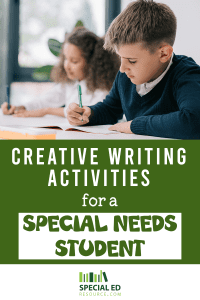
Shannah Holt
Leave a reply cancel reply.
Your email address will not be published. Required fields are marked *
Name *
Email *
Add Comment *
Save my name, email, and website in this browser for the next time I comment.
Post Comment

Our Services
- Special Education Tutoring
- IEP Consulting
- Special Needs Advocacy
- Home Schooling

Popular Articles
7 step iep process.
- Creative Writing Activities
- Activities to Help Kids Focus
- Self-Contained Classroom Defined
- 10 Benefits of Special Needs Tutoring
- Christmas Writing Prompts for Kids (All Grade Levels)
- Special Education vs General Education: What’s the difference?
- What Is Least Restrictive Environment in Special Education?
- Autism Diagnosis Medical vs Educational
- What are the Different Types and Levels of Autism?
- Signs of Autism in Children You Need To Know
Think Differently About Education. We Believe…

We assess your child’s learning style, personality, and interests to pair them with the ideal special ed tutor based on their individual needs.

Through technology and one on one learning, their future path to success can be made clear again.
Are you ready to see confident progress in your child?
Get started with a no-obligation consultation today!

There are hundreds of resources found on our website, SpecialEdResource.com, and on our YouTube channel that were created to help parents JUST LIKE YOU understand the cryptic language of special education.
Important Links
Copyright © 2024 SpecialEd Resource – Design by DeskTeam36 0
- Terms & Conditions
- Privacy Policy
Especially Education
Adapted high-quality curriculum to help special education students succeed in the classroom
Made For Me Literacy

Literary components include adapted art, visual recipes, games, writing activities, and more. Units include corresponding vocabulary words, editable templates, craftivities, and other printables for teachers and paraprofessionals to create anchor charts for group lessons. Using adapted books, story maps, adapted visual pieces, vocabulary, follow up comprehension activities, and assessments, each differentiated unit corresponds with a fiction and non-fiction text allowing you the ultimate story time sessions and meaningful literacy lessons with your special education students.
Because sensory recipes are a fun, hands-on way to incorporate academic and life skills, each unit includes one edible and one sensory visual recipe along with easy-to-complete student reflection sheets! Plus, no prep activities are the perfect staple to have on hand, so each Made For Me Literacy unit has a variety of differentiated cut and paste activities to help assess student knowledge, promote independence, and practice fine motor scissor skills.
The Made For Me Literacy product line also include several Made For Me Math and Made For Me Literacy Digital Skill Practice units, as well as a Made For Me Literacy: Sub Pack .
Be sure to join the Made For Me Literacy Facebook Group to share ideas or get answers to all your first time special education teacher questions, read all the blogs about MFML , and sign up for the newsletter to stay up to date on the new products.
We have a wonderful and generous group of teachers in our MFML Facebook Group. Join us and discover everything you need to know about using MFML in your classroom.
Made for Me Literacy
Are you following Made For Me Literacy on Facebook and Instagram? We are always sharing news, updates, and tips on our socials. Don’t miss out – click below and follow MFML today!
Join the Especially Education social media communities for the latest updates, as well as tips and advice for special education educators like you.
Elementary Writing Tutor
Reading and Writing for
Neurodiverse Kids - Grades 4-8
425-268-8502 - [email protected]

How to Make Writing Fun: 5 Writing Strategies for Special Education Students That Really Work

Worried your child won’t be able to focus during an online lesson? Think again—these strategies are game changers.
Keeping neurodiverse students engaged in online writing sessions might seem like a challenge. But with the right tools and techniques, it’s not only possible—it’s fun! Let me share five proven writing strategies for special education students that have worked wonders in keeping my students focused and excited about writing, even in a virtual classroom.
From interactive tools like KoalaGO to brain breaks with virtual games, I’ve found creative ways to turn writing into an exciting adventure.
1. Using Interactive Tools like KoalaGO and Games
One of the tools I rely on is KoalaGO, which functions like Zoom but offers more interactivity. It allows me and my students to work on the same document simultaneously with a co-browser, and I can annotate or place post-it word banks directly on the screen.
We also share Google Docs, and KoalaGO’s whiteboard allows us both to use tools together—even if your child is using an iPad or Chromebook.
I also integrate games from Wordwall.net to make writing more fun. I create quizzes and games like "spin the wheel" to help students strengthen their skills. We play games focused on combining subjects and predicates, replacing overused words (like "a lot"), and even checking if sentences are punctuated correctly.
This helps keep them engaged while building key writing skills.
2. Breaking Up Tasks and Using Brain Breaks
I always pace lessons to fit each student's ability to focus. Writing tasks are broken down into smaller steps, especially in areas where the student needs the most support. I analyze their writing samples to identify where to begin, and we build up their skills bit by bit.
When a student needs a mental break, we do quick brain breaks like Mad Libs for fun story creation, or they take a two-minute break in KoalaGO’s virtual playground , which is similar to Minecraft.
For younger students or those who need help staying on task, I use rewards like earning KoalaGO gems , which can be spent in the playground.
3. Personalizing Writing Prompts Based on Student Interests
To keep writing meaningful, I do interest surveys with my students to learn what they’re passionate about. I also allow them to pick their own topics when appropriate. Incorporating their hobbies into writing assignments keeps them engaged, and we often write about things we’ve read together.
If they need help getting started, I guide them in outlining what we’ve read or discussed , and then help them write about the topic in their own words. This process helps them organize their thoughts and form ideas more easily, especially when they struggle with brainstorming or structure.
4. Positive Reinforcement and Feedback Strategies
Motivation and confidence are key, so I use verbal praise for all my students, along with different reward systems depending on their needs. For my most distractible students, I use a virtual sticker chart , where they earn stars for focus and effort. I also encourage them to take ownership of how well they’re doing.
For most younger students, I reward them with KoalaGO gems , which they can spend on items in the playground when they earn a two-minute brain break or as a reward for a lesson well done.
In Google Docs , I leave comments with guiding questions to help students through the revision and editing process. I model tasks, we work through them together, and then I encourage independent work to build their confidence.
I also use a rubric, and I ask students where they want their paper to be. From there, we work together to revise their writing based on the points they want to improve, using guiding questions to help them through each step of the editing process.
5. Incorporating Multisensory Learning Methods
I use a variety of multisensory methods to help students better understand and express their ideas. We often use graphic organizers and virtual post-its, which students can move around on the screen. Sometimes, students draw pictures to help visualize what they want to write about.
For those who need the feel of holding a pencil or struggle with typing, I use document cameras so they can handwrite.
Reading their papers aloud is another key strategy; hearing their writing helps students identify areas that need improvement. Color coding parts of speech, using movement breaks for restless moments, and even moving letter tiles around for spelling practice are just a few ways I make lessons interactive.
Final Thoughts
Developing writing strategies for special education students in online writing sessions is absolutely achievable with the right approach. By using interactive tools, personalized prompts, positive reinforcement, and multisensory methods, I help students stay focused, build their writing skills, and enjoy the learning process. Lastly, remember that when students can talk about a topic, it often helps unlock the key to writing about it!

Exploring Effective Pre-Writing Activities in Special Education
Writing can be a challenge for our students in special education. Writing skills are more than just a set of techniques. Writing is a path to self-expression, communication, personal growth and more. For our students with exceptional needs, establishing that foundation through pre-writing activities is essential to help them develop the skills they need for future writing experiences and opportunities. I’m going to talk about my pre-writing bundle and how it can support laying a foundation to help your students develop broader writing skills through leveled guidance and instruction.
My pre-writing bundle includes 180 pages that are specifically designed for beginning writers. It includes 11 units that are scaffolded to help guide your students all year. Some students may spend a full year in levels 1 and 2 while others may work through all of the levels throughout the year. This set is perfect to allow you to customize based on individual student needs. Before we dive into specifics of this bundle, let's talk a little more about pre-writing and why its important.

Understanding Pre-Writing
Pre-writing activities are foundational exercises designed to prepare students for the physical and cognitive aspects of writing. These activities focus on developing fine motor skills, hand-eye coordination, and spatial awareness—all critical elements that contribute to writing skills. In special education, we can adapt and tailor pre-writing activities to individual needs and abilities to support progress for each student.
For students with special needs, engaging in purposeful pre-writing activities offers numerous benefits beyond acquiring writing skills. Some ways we can help foster this development include:
Fine Motor Development: Pre-writing activities promote the development of fine motor skills, including hand strength and coordination, which are essential for holding writing tools and forming letters.
Spatial Awareness: Through activities like tracing lines and shapes, students enhance their understanding of spatial relationships and letter formation on a page.
Cognitive Preparation: Pre-writing exercises stimulate cognitive processes such as planning, sequencing, and visual-spatial organization, laying a strong foundation for future writing tasks.
Now that we have a better understanding of the why, lets dive into this amazing bundle that has been purchased over 2,000 times in my TeachersPayTeachers store. This pre-writing bundle is divided into 11 units. It is designed to meet the needs of all your learners.
Unit 1: Lines
I recommend beginning writers start at unit 1. Unit 1 is simply lines. You have horizontal and diagonal lines to start. This is perfect for your learners who need that foundational starting point. Tracing lines will help them develop those very basic skills needed such as hand eye coordination, spatial awareness and following directional cues. Straight lines set up a simple path for them to follow. Your students can use any tool they need to such as a pencil, marker, crayon, adapted tools and more. You can accommodate with slant boards, clip boards, tape and you can also print as needed, laminate or place in sheet protectors for extended use.

Unit 2: Curves
This is a perfect next step to line tracing. These curved pages begin with a slight curve and they progress into a more advance curve. Again, these will foster that hand eye coordination, increase dexterity and muscle strength by encouraging your students to begin to analyze what they are writing. Adapt for your students however you need in order to set them up for success.

Unit 3: Pencil Control
Pencil control is where things definitely start to increase in difficulty. This level is designed to really hone in on targeted skills. Your learners will begin to really work on having control of their writing through following narrow paths to enhance their level of control over their marks.

Unit 4: Trace inside line
This is similar to pencil control. This unit gives your students narrow passages to follow while keeping their marks inside of the lines. This skill is continuing to hone in on their dexterity skills while continuing to improvise their small hand muscles, coordination and more.

Unit 5: Pencil Lift
Unit 5 gives your learners a little more freedom in their writing skills. Now that your students have fine tuned their ability to trace inside of lines, maintain a line, curve and more they can begin to explore other elements. This unit will have your students completing repetitive patterns through pencil lifts. Instead of keeping a consistent flow of their marks, your students will need to start to control their ability to trace, lift, and repeat. The lifting and repeating portion of this unit create more complexity for your learners.

Units 6-11: Paths, shapes, letters, numbers and more
Units 6-11 will help broaden their flexibility with writing. These units will provide your students will predictable and unpredictable paths to follow. These units include mazes, shapes, letters, numbers, pictures and more. Once your students have successfully completed all of these units, they will be more prepared for next level writing activities. They should be able to trace simple words and sentences, follow directions for simple paths, shapes and more.

Where can you get this amazing pre-writing bundle?
You can grab this set in a few different places. You can find it in my shop here on the website, you can find it here on teacherspayteachers , or you can find it here on Etsy !
Where do you go from here?
If you are looking for next step activities, I also have a full year guided writing set . This guided writing set will allow your students to complete daily writing activities by reading (with someone or independently), tracing, writing on their own and building a sentence. After they are able to trace and write, you can begin to move into sentence structure. This activity will foster those next step skills. You can check it out here !
I hope this has helped you better understand the need for pre-writing activities in your special education classroom. Although I greatly discussed in detail about the set that I have created and used countless times, you can also use a variety of other methods to foster these skills for your students. Sometimes we need to leave the worksheets behind, get creative and have that hands-on approach. Some other things you can do with your students to promote pre-writing techniques include:
Playdough and Clay Exploration: Manipulating playdough or clay helps strengthen hand muscles and improve dexterity. Students can roll, pinch, and shape dough to develop fine motor control.
Finger Painting and Drawing: Engage students in finger painting or drawing activities that encourage hand-eye coordination and creative expression.
Sensory Writing Trays: Create sensory writing trays filled with materials like sand, salt, or rice. Students can use their fingers to write letters and words, reinforcing letter formation and motor memory.
Interactive Apps and Games: Utilize interactive apps or games designed for pre-writing skills, offering visual and auditory feedback to reinforce learning.
If you need customized products or support, please feel free to always reach out to me at [email protected]
Recent Posts
Meet the Teacher Editable Template for Special Education
Token Boards in Special Education
Item added to your cart
Sale! Use Code THANKFUL for 25% off your purchase!

Turning Special Education Students into Writing Students
Research-based and standards-based.
- Prevent overwhelm and frustration during writing time
- Differentiate instruction with leveled resources
- Save hours of planning and prep time
Writing Intervention
All about me writing prompts and book template, easy back to school word search puzzles free printable pdf, friendly letter writing 1st grade - format, parts, examples, template, closings, paper, friendly letter writing 2nd grade - format, parts, sample, template, closings, paper.

- Choosing a selection results in a full page refresh.
- Opens in a new window.

COMMENTS
Today I would like to introduce you to Sentence Building.. This resource was created out of a desperate need for my own self-contained classroom. Students in my classroom, verbal and nonverbal, were struggling with sentences… writing them, putting them together… the whole nine yards… but they had IEP goals to meet and I had zero curriculum to help them achieve their annual goals.
Resources like this are hard to find, so I started creating my own. Over the years, I got better at learning my student's abilities and how to challenge them. Now, my students enjoy my creative writing lessons and they even think writing is FUN! Here are the steps I follow to create a differentiated writing lesson in my classroom:
These 5 creative writing activities are a fun way for students to develop their writing motivation and improve creative writing for kids. These creative writing tips include links to writing prompts, quick writing activities, and are easy to implement at school or virtual classrooms. Check out the other special education resources we have ...
Effective writing instruction for students with disabilities incorporates three components: adhering to a basic framework of planning, writing, and revision; explicitly teaching critical steps in the writing process; and providing feedback guided by the information explicitly taught. Learn more about methods for using these components in this article.
Made For Me Literacy are monthly themed comprehensive special education reading units spanning various subject areas, including basic reading, writing, math, science, and fine motor skills. With over 30 tasks, every task box and file folder come with two levels of difficulty, so the differentiation is always done for you!
Worried your child won't be able to focus during an online lesson? Think again—these strategies are game changers.Keeping neurodiverse students engaged in online writing sessions might seem like a challenge. But with the right tools and techniques, it's not only possible—it's fun! Let me share five proven writing strategies for special education students that have worked wonders in ...
A Case Study Approach to Writing Individualized Special Education Documents: From Preschool to Graduation by Kathleen A. Boothe & Andrea A. Hathcote . This book, published by CEC offers readers a case study of one special education student from early childhood through graduation, with examples of IEP
According to Hooper et al. (2002) there is a limited body of research on writing instruction for special needs populations. They suggested that this neglect has had a negative effect on special education. Authors of several studies that have been done (Gersten, Baker & Graham, 2001; Saddler and Asaro, 2007; Wong et al, 1994) conclude
Writing can be a challenge for our students in special education. Writing skills are more than just a set of techniques. Writing is a path to self-expression, communication, personal growth and more. For our students with exceptional needs, establishing that foundation through pre-writing activities is essential to help them develop the skills they need for future writing experiences and ...
Transform special education students into writing students with a research-based intervention curriculum. Scaffold instruction with writing prompts, sentence starters, word banks, graphic organizers, checklists, and writing paper. Teach sentence writing, personal narrative, opinion, informational, and letter writing.